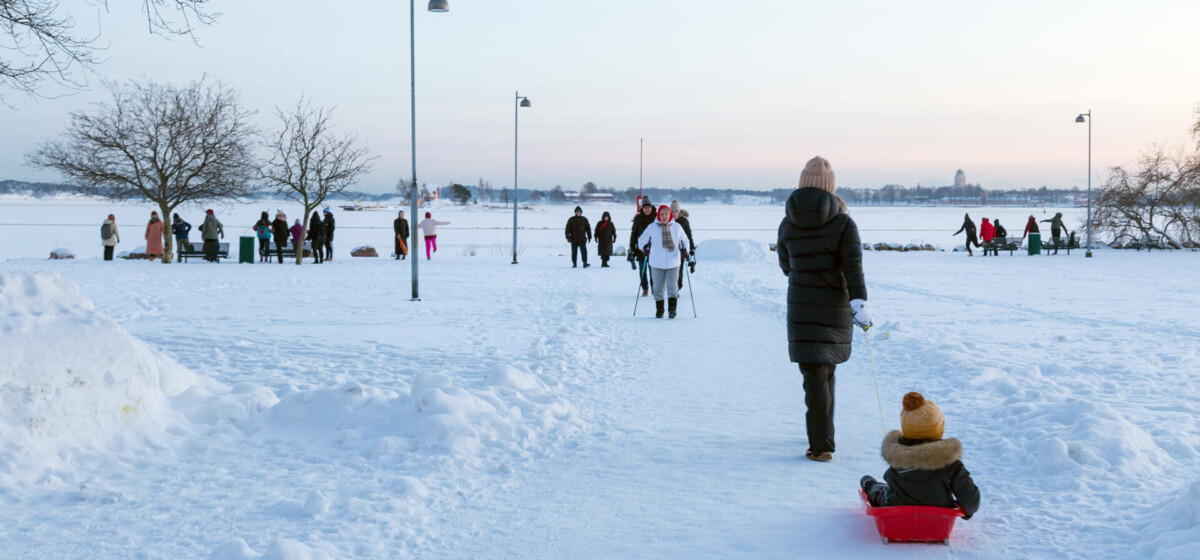News

Municipalities at the forefront of climate change mitigation in Helsinki-Uusimaa Region
Published:
The Hinku network, coordinated by the Finnish Environment Institute (SYKE), has been in operation for 15 years. Over the years, the network has grown from its original five municipalities to 96 municipalities and five regions, covering around 44 % of Finland’s population. The network includes ten municipalities in the Helsinki-Uusimaa Region: Hanko, Hyvinkää, Inkoo, Kirkkonummi, Lohja, Loviisa, Porvoo, Raasepori, Siuntio and Vantaa.
The municipalities involved are committed to reduce greenhouse gas emissions more extensively and rapidly than EU targets require. The network aims to create solutions that have economic and social benefits as well as environmental advantages.
From awareness-raising to climate action
The original aim of the network was to create new and cost-effective emission reduction measures for municipalities, residents and industry. The five small pilot municipalities inspired others to join in with their examples and solutions. At the same time, the network activated the domestic market and created a regional showcase for Finnish climate-friendly technologies to the world.
The current Hinku network includes both large cities and small municipalities. Municipalities throughout the country and also in the Helsinki-Uusimaa Region have very different resources for climate work. Their economic structures differ and many municipalities had already made significant emission reductions before the climate targets were set and emissions monitoring started. According to Jyri Seppälä, Professor at SYKE and Director of the Hinku network, municipalities should therefore not be compared on the basis of emission reductions.
In December 2023, the network published its first annual report. In the report, the emissions performance of the municipalities are reviewed and the indicators of climate action and measures taken by municipalities presented. According to SYKE, the content of the annual report will be developed over time. This will enable municipalities to better position their activities in relation to other municipalities and to find new ideas for improving their activities. The annual report compiles information so that the value of municipalities’ climate work can be better understood by society as a whole.
Emission reduction target: -80% CO2
The Hinku municipalities and regions have committed to an 80 % reduction in emissions by 2030 compared to the 2007 levels. A total of ten municipalities in the Helsinki-Uusimaa Region have committed to this target through the network.
According to Syke’s preliminary data, the combined greenhouse gas emissions of the Hinku municipalities in 2022 decreased by 3,5 % from the previous year. Compared to 2007, emissions have fallen by 39,8 %. As in previous years, the main sources of greenhouse gas emissions in 2022 were road transport (31,9 % of total emissions), agriculture (15,1 %) and district heating (12,8 %).

The emissions of the Hinku municipalities have decreased slightly more than those of Finnish municipalities as a whole. In Hinku municipalities, for example, emissions from electricity are higher than in Finland as a whole, while the share of agriculture and district heating in total emissions is lower.

In addition to emission calculations, Syke monitors the climate work of municipalities through various indicators and by collecting information from Hinku municipalities on their climate measures. The indicators provide municipalities with information on energy and transport. Data such as the number of buildings using geothermal energy and the number of electricity and gas filling stations support and complement the monitoring of municipal and regional climate work.
Mitigation measures and climate networks in the Helsinki-Uusimaa Region
The measures collected from all Hinku municipalities in 2022 included about 50 energy measures, about 50 measures related to buildings and real estate, about 20 transport measures and numerous other climate change mitigation measures. In the municipalities of the Helsinki-Uusimaa Region, measures were taken to optimise the energy use of lightning, develop the monitoring of waste food and promote several different mobility and public transportation measures, to mention few.
In addition to the Hinku network, the municipalities of the Helsinki-Uusimaa Region are involved in many other networks, commitments, agreements and programmes that promote climate and circular economy work.
For example, up to 18 municipalities in the Helsinki-Uusimaa Region are committed to the Energy Efficiency Agreement for the Municipal Sector (KETS), seven municipalities to the Covenant of Mayors (CoM) Agreement and one municipality to the FISU network for resource wisdom. The five-year Sustainable Cities Programme, which ended last year, involved no fewer than 18 municipalities in the Helsinki-Uusimaa Region.
The Helsinki-Uusimaa Regional Council maintains regional networks for knowledge sharing, such as the Helsinki-Uusimaa Climate Cooperation Group and the Environment, Circular Economy and Climate Expert Group.







 Return to listing
Return to listing